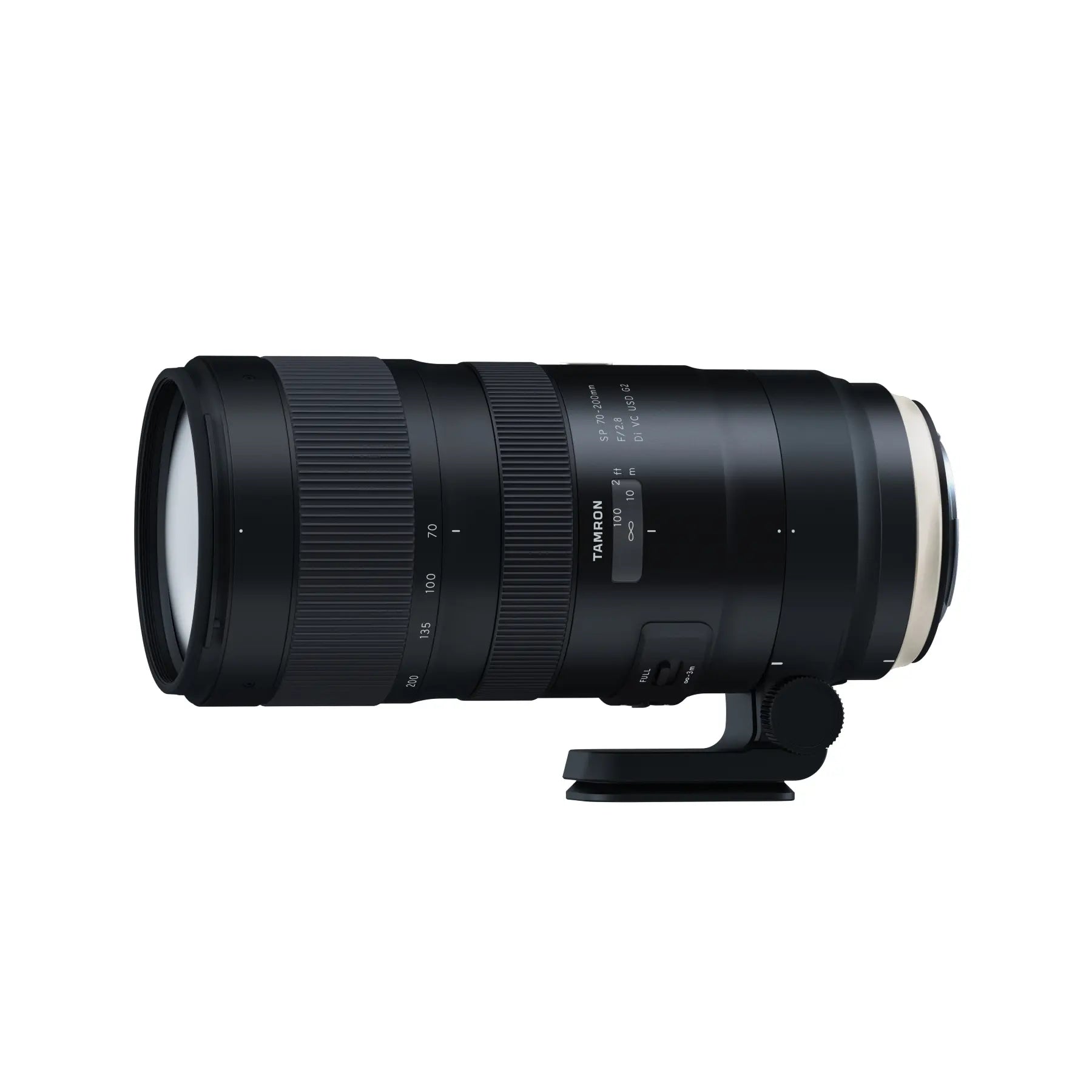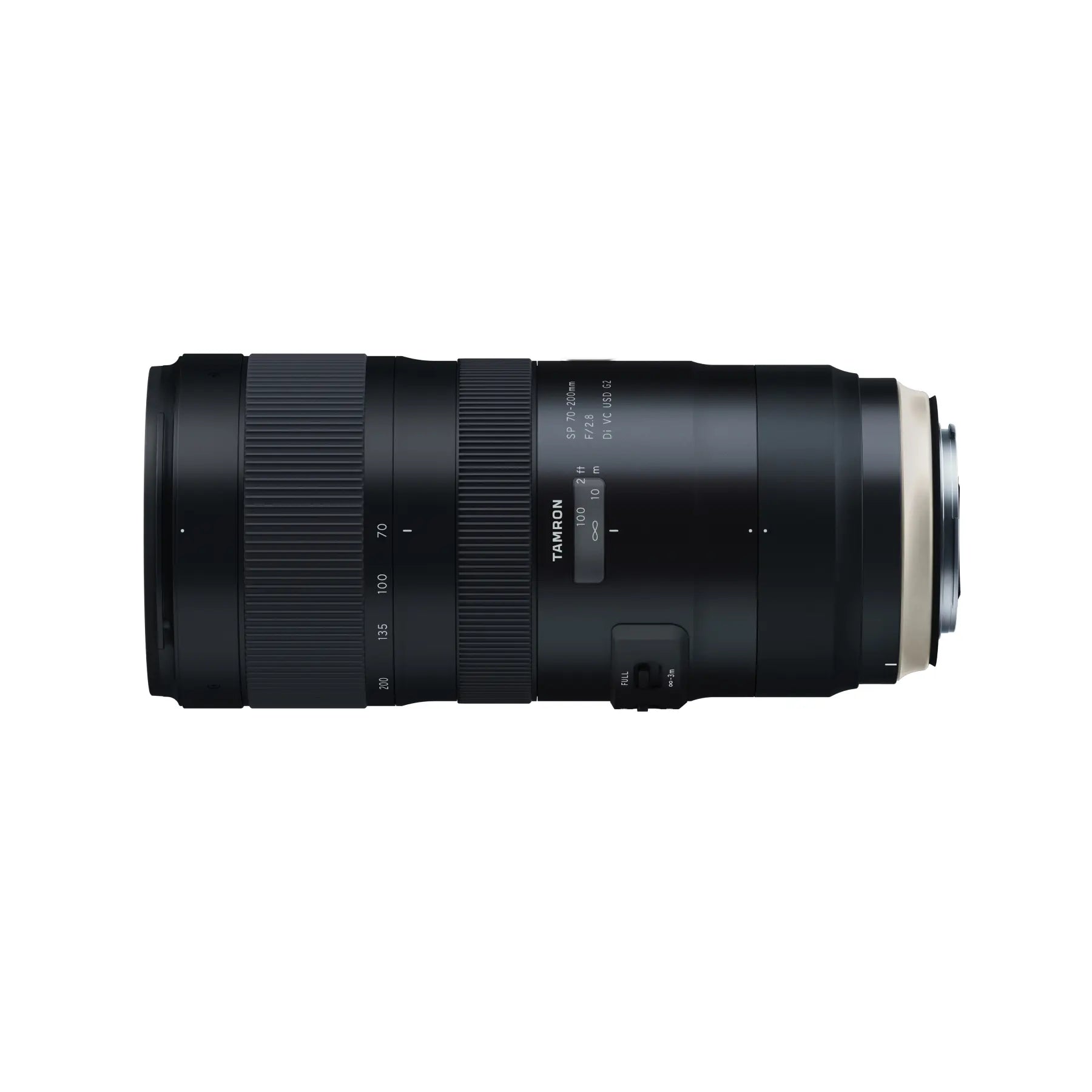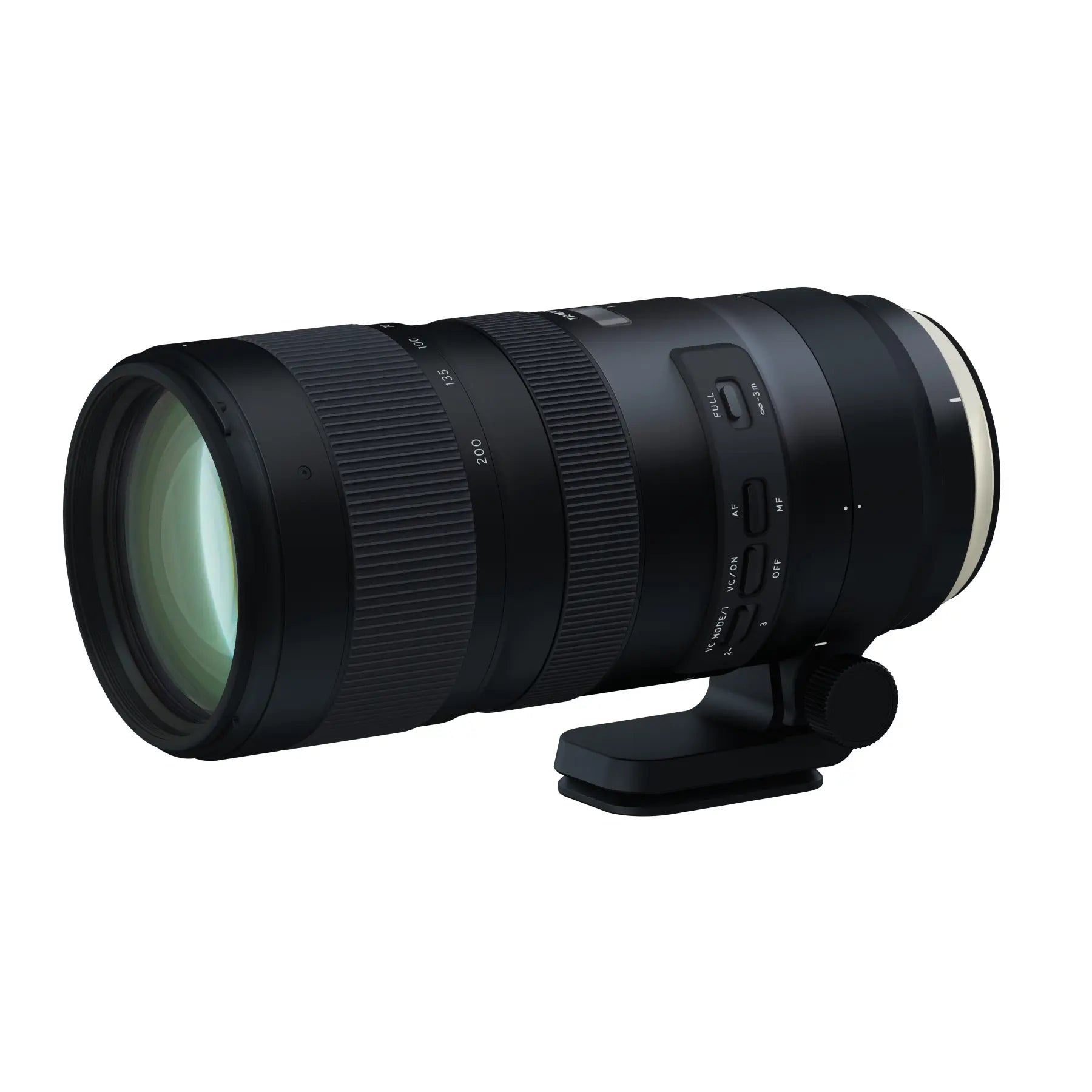Product Description
Tamron SP 70-200mm f2.8 Di VC USD G2 - Canon EF Mount Lens
High-Performance Telephoto Zoom Lens
The Tamron SP 70-200mm f2.8 Di VC USD G2 (Model A025) is a professional telephoto zoom lens designed for Canon full-frame DSLR cameras. Offering exceptional optical performance and best-in-class image stabilisation, this lens is perfect for sports, wildlife, portrait, and event photography.

Key Features
- 77mm filter size
- Length: 193.8mm (from camera mount)
- Diameter: 88mm
- Best-in-class VC (Vibration Compensation) image stabilisation equivalent to 5 stops
- Maximum aperture: F/2.8, Minimum aperture: F/22
- Diaphragm: 9 rounded blades for smooth bokeh
- Lens Construction: 23 elements in 17 groups
- USD (Ultrasonic Silent Drive) motor for fast, accurate autofocus response
- Full-time manual focus override
- Minimum focus distance: 95cm
- Maximum magnification ratio: 1:6.1

Enhanced Optical Performance
Every aspect of the SP 70-200mm F/2.8 G2 zoom lens has been improved, providing superior image quality and an enhanced bokeh effect. The optical design includes XLD (eXtra Low Dispersion) and LD (Low Dispersion) elements to minimise chromatic aberrations across the entire zoom range. This ensures optimal resolution and clarity, even at the edges of the frame. Additionally, Tamron's exclusive eBAND Coating greatly reduces flare and ghosting, ensuring high-contrast images even in challenging lighting conditions.

Fast and Accurate Autofocus
The USD (Ultrasonic Silent Drive) ring-type motor, paired with two high-performance microcomputers, delivers exceptionally fast and precise autofocus. A full-time manual focus override allows photographers to make fine adjustments without switching out of AF mode.
Advanced Vibration Compensation
Tamron’s industry-leading VC (Vibration Compensation) system provides up to 5 stops of stabilisation (CIPA standard). The lens features three distinct VC modes, including one optimised for panning, allowing photographers to adapt to different shooting conditions for sharp, blur-free images.
Weather-Sealed Construction for Durability
Built for demanding outdoor use, the lens features moisture-proof and dust-resistant construction. Special seals at key points prevent the intrusion of dust and water, offering enhanced protection in harsh environments.
Fluorine Coating for Easy Maintenance
The front lens element is coated with a protective fluorine compound that repels water and oil, making it easier to clean and resistant to smudges, dirt, and dust.
Electromagnetic Diaphragm System
An advanced electromagnetic diaphragm system ensures precise aperture control. This feature, standard on Canon-mount lenses, has also been implemented in Nikon-mount versions for improved exposure accuracy.
Ergonomic Design and Improved Handling
Tamron has incorporated a new textured grip and an Arca-Swiss compatible tripod interface for enhanced usability. The lightweight magnesium tripod mount makes handling more comfortable while maintaining stability.
The Tamron SP 70-200mm F/2.8 G2 is a must-have telephoto zoom lens for photographers seeking professional image quality, high-speed autofocus, and outstanding stabilisation in a durable and lightweight package.
Payment & Security
Your payment information is processed securely. We do not store credit card details nor have access to your credit card information.























